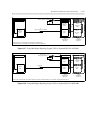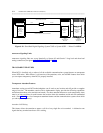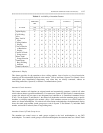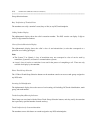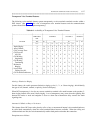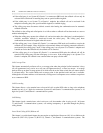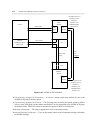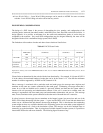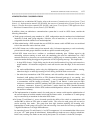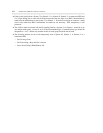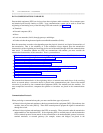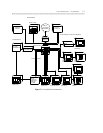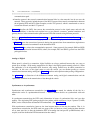DISTRIBUTED COMMUNICATIONS SYSTEM (DCS) 6-21
_ ______________________________________________________________________________________
_ ______________________________________________________________________________________
_ ______________________________________________________________________________________
• Leave Word Calling — Leave Word Calling messages can be stored on AUDIX for users on remote
switches. Leave Word Calling activation can be from any switch.
ENGINEERING CONSIDERATIONS
The design of a DCS cluster is the process of determining the size, quantity, and configuration of the
switching nodes, internode (intracluster trunks), main PBX access lines, data links, and off-net facilities. A
design objective is to provide, at minimum cost, the traffic and transmission grades of service that are
acceptable to the customer. Very small DCS configurations may be designed manually, but most will be
designed with the aid of a mechanized design system, like E-INOS.
The limitations of the number of nodes and other cluster criteria are listed below:
Table 6-5. DCS Cluster Limits
_ ______________________________________________________________________________________
DIMENSION SYSTEM 85 SYSTEM 75 DEFINITY
PBX
_ __________________________________________________________________________
FEATURE FP8 R1 R2 R1 G1 G2
_ ______________________________________________________________
Iss 3 - V1 V2 V3 V4 V1 V2 V3
_ ______________________________________________________________________________________
Nodes/Cluster 12 N/A 12 20 20 63 N/A 64 64 64 63
Ext/Cluster 81K N/A 81K 81K 100K 100K N/A 100K 100K 100K 100K
Trks/Switch * N/A 2500 5000 5000 6000 N/A 200 200 400 6000
_ ______________________________________________________________________________________
Dependent on memory size: 256 for DIMENSION 600; and 250, 475, and 1100 for DIMENSION 2000 with memory sizes C, D, and
F, respectively.
Cluster limits are determined by the switch with the least functionality. For example, if a System 85, R2V1
is in the cluster, the maximum number of nodes that can be in the cluster is 12. Note that the maximum
number of switches supported by AUDIX in a DCS network is 20.
Since a message is associated with a particular trunk and trunk group, the message must originate and
terminate on the same two systems connected by that trunk group. Terminating a message means that it
comes in on a link and channel and is routed to a processor channel and then into the system where it
interacts with call processing and administration software. If the call is routed on to another node, the
message is regenerated with new trunk group and trunk number information and sent on. This message
must, in turn, terminate on the system connected to the other end of the trunk the call is routed to.
In a hop, however, the message does not terminate at the hopped system, but passes into and out of the
DCIU or PI without interacting with the system — it goes into the DCIU or PI on one link and channel and
comes out on a different link and channel, the message unchanged. This is done because the terminating
system might not have any available channels to the originating system, but some other system might have
some unused channels on a link to the destination system. The message can do this multiple times to
eventually get to the destination. Thus, by using these available channels on other systems, it is possible to
interconnect DCS nodes with more channels. The following figure illustrates a hop:



